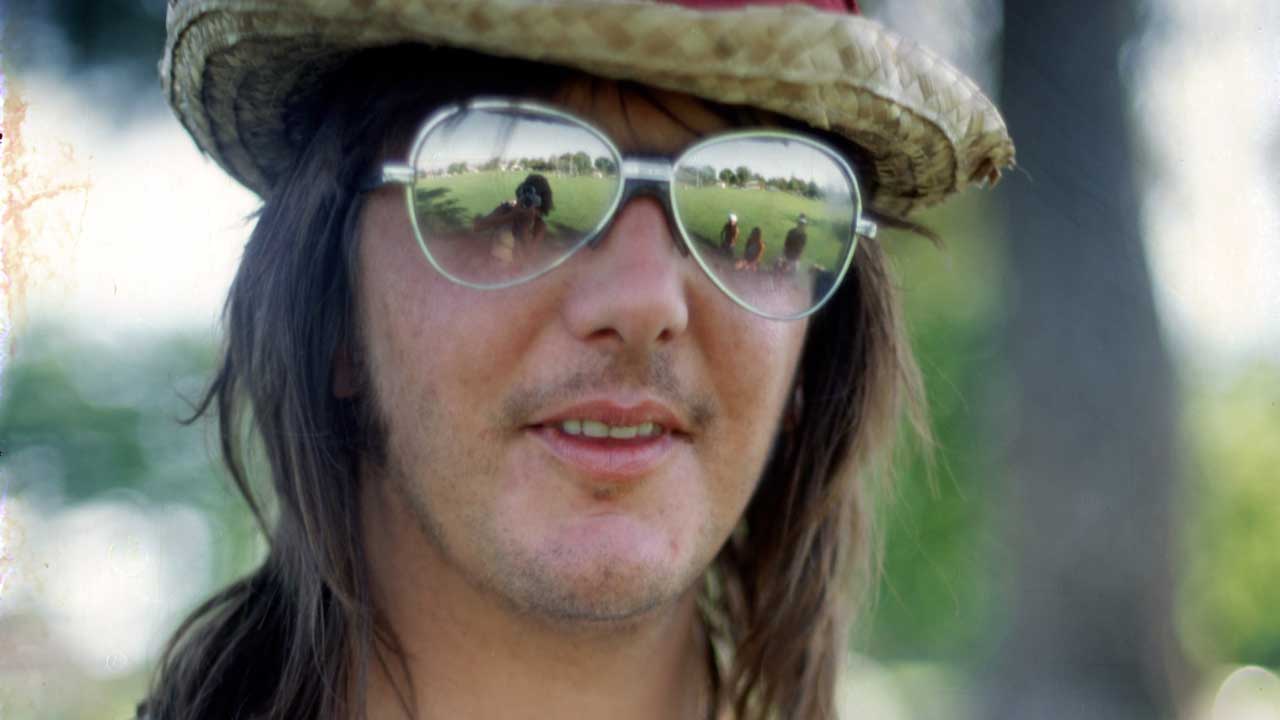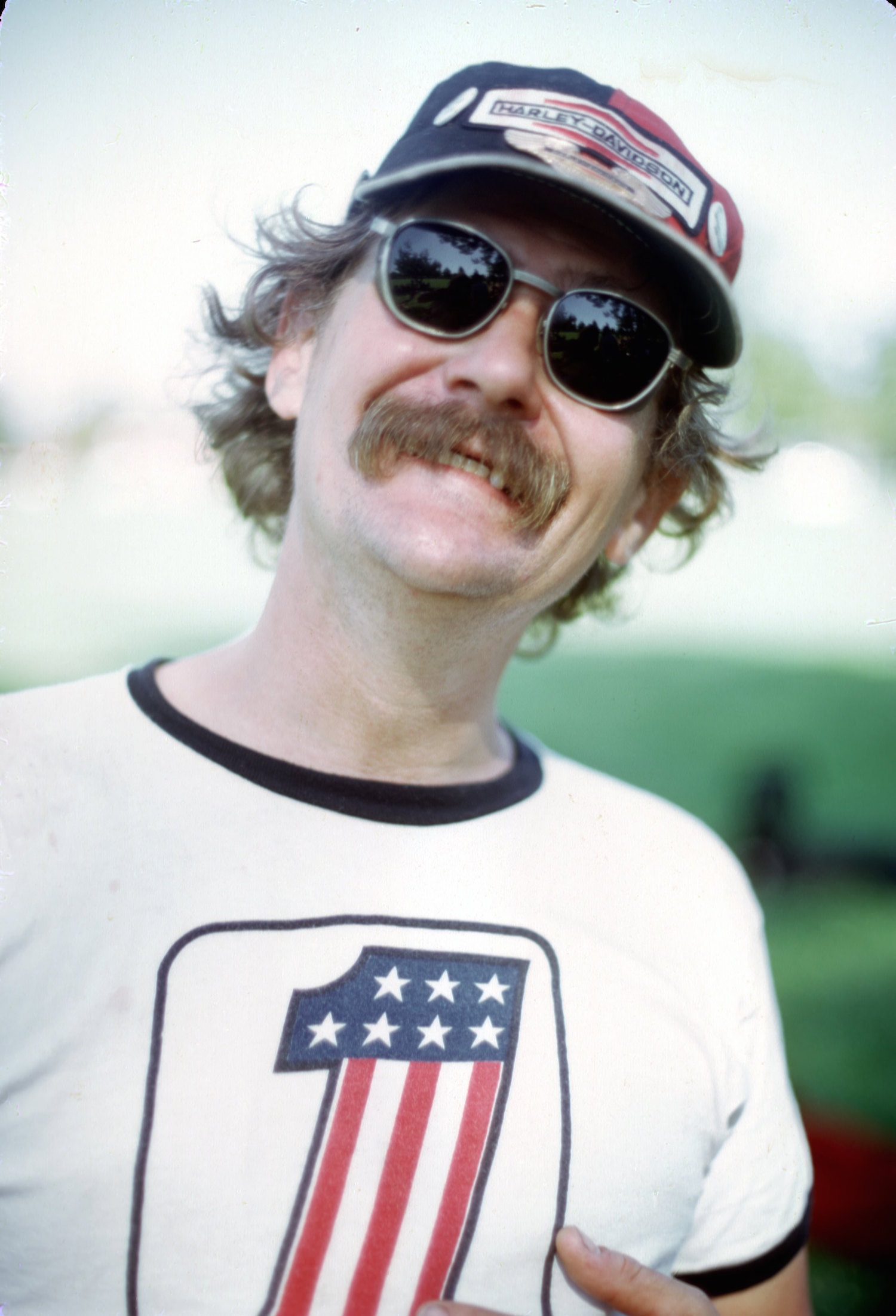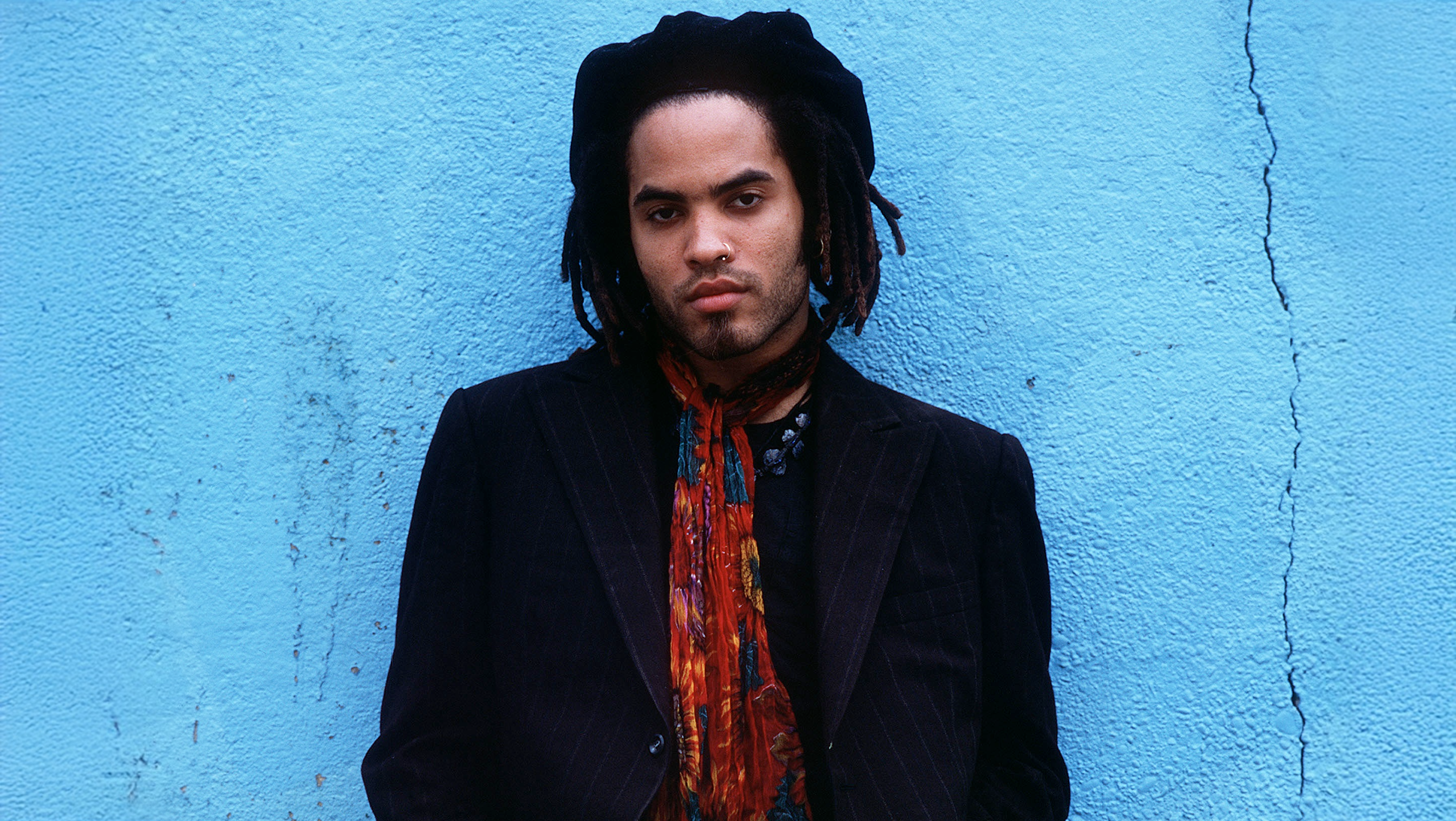"If there was a day in my life I could take back, it would be that day": The death of Gram Parsons - a story of drugs, theft, and a burning corpse
The strange and tragic story of the death of Gram Parsons, told by the people who were there

Late in the evening of September 20, 1973, two drunken men wearing rhinestone jackets and cowboy hats drove a hearse into Los Angeles Airport and stole the corpse of country-rock pioneer Gram Parsons. In the hours that followed, one of the most bizarre adventures in music history unfolded.
Parsons had found success as the man who steered The Byrds into country rock in 1968. He then took the new genre further with the Flying Burrito Brothers and, through his friendship with Keith Richards, significantly influenced the Stones’ classic 1972 album Exile On Main St. Hugely gifted as a songwriter and singer, he was also a tortured soul whose relationship with his wealthy family caused him no end of grief.
By 1973, heroin addiction and a serious alcohol problem had reduced him to a low ebb, his marriage was in tatters, and death seemed to be frequently on his mind. In one of his last interviews he declared: “Death is a warm cloak, an old friend.” Within weeks he was dead. But that was just the start of the story.

Phil Kaufman (Parsons’s road manager): Just a couple of months before he died, Gram and I went to the funeral of The Byrds guitarist Clarence White. We’d had a few sherbets before we went, and we were saying that if Clarence had his choice he wouldn’t have chosen that kind of high-mass Catholic funeral with all that mumbo jumbo. So Gram said, you know: “This is bullshit. If I die I want somebody to have a few beers, take me out to the desert and burn my body.” I said: “All right, it’s a deal. But would you do the same for me?” He said: “Yeah.”
Several months later, when we had finished his new album, Grievous Angel, he went out to the Joshua Tree desert to celebrate and kick back while I was in LA putting his next tour together. Gram often used to go to Joshua Tree. He just loved that area. He’d spent some time there with the Stones, and we’d also done some filming there.
So he booked a couple of rooms in the Joshua Tree Inn with [Parsons associate] Michael Martin and his girlfriend Dale McElroy. She was a well-travelled woman who, at that time, had unlimited funds because she had inherited Caterpillar stock, which gave her a good, guaranteed income.

Dale McElroy (Michael Martin’s girlfriend): Gram drove down in his Jag with [his ex-girlfriend] Margaret Fisher and we met him at the motel.
Sign up below to get the latest from Classic Rock, plus exclusive special offers, direct to your inbox!
Phil Kaufman: As Gram’s road manager I spent a lot of time finding his drug stashes and getting rid of them, but he could always get more. In Joshua Tree he ran into the singer Scott McKenzie’s ex-wife, who could supply him, and spent the day drinking and doing drugs. Margaret was on the same drugs as Gram, and they were pretty far gone by the evening.
Dale McElroy: A few hours later, Margaret rushed up to my door in a panic and told me that Gram had overdosed, and to go get some ice cubes and meet her in Room 1.
Phil Kaufman: Margaret was familiar with the effects of heroin and morphine. She knew heroin is a downer, it makes your body lethargic, and an ice cube suppository shocks the body awake again.
Dale McElroy: Margaret quickly took down his pants and pushed two or three ice cubes up his ass. To my astonishment, in a matter of seconds he had regained consciousness, had made some joke about what we were doing with his pants down, had gotten up and was walking around the room. I’d never seen anything like this in my life.
Phil Kaufman: Michael, meanwhile, had gone back to LA to get more drugs, so it was only Dale and Margaret.
Dale McElroy: I saw how completely wrecked Margaret was, and asked what they had taken. She told me it was morphine.
Phil Kaufman: But Gram told her he was okay and he went back to his room.
Dale McElroy: After an hour or more, Margaret came back to my room and told me she wanted to go out and get some food for Gram. The last thing she said was to keep an eye on Gram. I took a book into the room and found Gram passed out on the bed. After about 20 minutes his breathing started to change, it became very laboured and I became scared. I wondered what to do – should I get some help, or just stay with him and give him artificial respiration.
Phil Kaufman: Dale tried to save his life by giving him mouth-to-mouth but it didn’t help. Then Margaret came back and they got the people in the hotel office to call for an ambulance.
Irving Root, MD (pathologist): He was taken to High Desert Memorial Hospital where he was admitted at 12.15am.
Donna Johnson (registered nurse): I was working in the emergency room that night. I do remember that there were attempts to resuscitate him, but there was never any response.
Bill Hill (coroner): Cardiopulmonary resuscitation measures were started with intracardiac adrenalin. At 12.22 defibrillation was attempted twice with calcium glucose, intracardiac. The subject was pronounced dead at 12.30am.
Margaret Fisher (ex-girlfriend): If there was a day in my life I could take back, it would be that day. To see the light go out in somebody’s eyes is not something… to be shared.
Irving Root, MD (excerpts from first autopsy, held in High Desert Memorial Hospital): There are some partially scarred encrusted needle puncture wounds over the dorsum of the left hand… There are several recent precordial needle puncture wounds… There is a small amount of anterior mediastinal haemorrhage corresponding with the needle puncture wounds in the precordial area… Diagnosis and cause of death: drug toxicity, days, due to multiple drug use, weeks.
Dale McElroy: Margaret and I were interrogated in an adjoining room. It was still so painfully obvious that she was loaded, and I figured the police would hold her for sure. I realised that Phil had to know what had happened, so I used the hospital phone to call him.
Phil Kaufman: When Dale called and told me Gram was dead I said: “No, no.” But Dale said: “Gram is dead and they’re taking his body away.” I said: “Okay, I’ll be right there.” It’s about a three-hour drive to get up there from LA. Kaphy Miles, my girlfriend at the time, had a VW bus.
We got to the motel early in the morning and I cleaned the room out. Then, at the hospital, I was told the police wanted to interview the girls again. So I told them who I was and said I would bring the girls in. I got everybody into the car and took them back to LA, out of the local police jurisdiction, so the girls wouldn’t have to be interviewed.
I stayed home at my house on Chandler in LA for a couple of days, but I knew what I had to do. I had to fulfil my promise to Gram. I called the mortuary in Joshua Tree to find out where Gram’s body was. They told me he was en route to Continental Airlines at LAX, from where he would be shipped back to his step-father in New Orleans. As it happened, Dale owned a big Cadillac hearse, so I told her I wanted it, and I needed Michael to help me.
So Michael and I set off in the hearse wearing our Sin City jackets and cowboy hats. Our whole team was me and Michael, assisted by Jose, Jack, Jim and Mickey, [Jose Cuervo tequila, Jack Daniel’s whiskey, Jim Beam bourbon and Mickey Bigmouth beer]. We were pretty well-oiled. They had a holding area in a hangar at the airport where they take the caskets for onward shipment, and we got there about 10 o’clock on the Thursday night.
Bill Hill (coroner): Before the casket could be loaded aboard the plane, two individuals in a funeral coach arrived and told the attendant that the family had decided to ship from Van Nuys airport.
Phil Kaufman: At first he was suspicious. He was looking at the way we were dressed, so I said we were doing overtime, and I basically hustled him into hurrying up. As I’m signing the papers, using the name Jeremy Nobody, a police car pulls up and blocks our exit. The cop gets out and he’s just standing around, so I yelled at him: “Hey, give us a hand with this stiff, will ya?” And he goes: “Uh, okay.” And the cop helped us load the body into the hearse. Michael got behind the wheel and as we drove out he hit the hangar door. There was enough space for a plane to taxi through and he hit the door. The cop looked at us and I’m thinking, “Boy, we’re in trouble now.” But he moved his car and off we went.
We stopped at a gas station and bought five gallons of gasoline. Then off we went in our drunken stupor, with Gram in the back, and drove out beyond the Joshua Tree Inn – by now it’s like 1am – up into the National Park until we reached Cap Rock, which was about as far as we could go in our state. We opened up the back of the hearse, but the casket dropped as Michael was pulling it out.
Michael was really edgy, but I decided we had to say goodbye to Gram so I opened up the casket. And the hinges obviously hadn’t been oiled, so it creaked really loud. Then there he was, laying naked, with surgical tape covering where they had done the autopsy. We used to do this thing, you know, when you’re a kid, where you point to someone’s chest, they look down and you go ‘zip’ up to their nose? Well, that was the last thing I did to Gram. Michael was going: “Don’t touch him, man.” But, you know, he was dead, right?
So then I poured the gasoline all over him and said: “All right, Gram, on your way…” I struck the match and threw it onto the gasoline. And when you do that, it consumes an enormous amount of oxygen and makes a big ‘Whooomph!’ As we were watching, the body actually bubbled, and then we saw his ashes flying up into the night. Then we saw some headlights approaching from across the desert. We thought it might be the park rangers so we beat it out of there.
On the way back to LA there was a lot of traffic, there’d been some sort of accident. We rear-ended a car on the freeway, and a cop leaned over and looked in the hearse just as Michael opened his door and all these bottles fell out. The cop says: “You two stay here,” and he handcuffed us together and went off back to his car. Well, Michael was a skinny little guy so he just slipped his hand out of the cuffs, and we took off down the nearest off ramp. When we got back to my house, I got somebody to cut the handcuffs off.
Irving Root, MD: Friday, late morning, a report was made to the Sheriff’s office, San Bernardino, of a casket and body burning in Joshua Tree National Monument. Subsequent investigation revealed an advanced charred body with only a small, residual amount of casket remaining. The metal handles were intact, but most of the wood had been burned away. The body had been previously autopsied and embalmed, and there was evidence that this was the body of Gram Parsons.
Bill Hill: The body was very badly burned. The fingers were gone, as were all facial features. The undersigned [Hill] remembered that, at the request of the wife of the deceased, a ring was left on the ring finger of the left hand of the body of the subject. A yellow metal ring with a red stone was found in the ashes at the left side of the body. It appeared, although badly discoloured by the fire, to be the same ring.
Irving Root, MD (excerpts from second autopsy, held at Wiefel Mortuary, Yucca Valley): All skin has been burned away. The genitalia are not present and all soft tissues of the pelvis have been burned so that sex identification cannot be made on soft tissue parts. The body has been previously autopsied. The organs have been removed and replaced as in the normal fashion of autopsy.
The pattern of the autopsy is consistent with the type of autopsy I performed on the body of Gram Parsons originally. The skull has been removed with a saw… many of the organs have been extensively charred away… the cranial cavity has been filled with cotton. The brain has been replaced in the body cavities and portions of this remain. The facial features have been extensively scarred. Almost all soft tissue from the face has been burned away.
Phil Kaufman: Several days later, Gram’s death hit the headlines in the local papers: ‘Rock star’s body burned in bizarre desert ritual…’ Everybody in Los Angeles knew I did it, so it didn’t take long for the cops to figure it out. The cops came to my house and questioned me: “Did you have necrophiliac sex with him?” All that sort of bullshit.
As it happened, Arthur Penn and Gene Hackman were shooting some scenes for a film called Night Moves at my house. As I’m being taken to the cop car, Hackman and Penn are standing watching and they asked Kaphy what was going on. When she explained, Arthur Penn said: “Gene, we’re shooting the wrong movie here.” Later, when I was driven home, they stopped filming and everybody gave me a round of applause.
Eventually, when we went to court, all they could charge us with was stealing the casket. The body itself had no intrinsic value, so unless someone filed a complaint there was no law broken. They fined us $1,300 – Gram’s step-father had bought the cheapest casket he could get – and Dale paid the fine.
What happened next?
Gram Parsons’s remains were shipped by his step-father to New Orleans for burial at The Garden Of Memories. In Kaufman’s words: “Dying was a great career move for Gram.” He is now acknowledged as one of the most influential country-rock performers of all time. Room 8 at the Joshua Tree Inn is now a ‘shrine’ dedicated to Parsons’s memory, but it remains available for rent.
Phil Kaufman continues to work as a respected road manager, and is currently in the employ of Nanci Griffith. His autobiography, Road Mangler Deluxe, was published in 1993. The film Grand Theft Parsons, a fictionalised account of Parsons’s death, starring Johnny Knoxville and Christina Applegate, was released in 2003.
This feature originally appeared in Classic Rock 168.
Johnny is a music journalist, author and archivist of forty years experience. In the UK alone, he has written for Smash Hits, Q, Mojo, The Sunday Times, Radio Times, Classic Rock, HiFi News and more. His website Musicdayz is the world’s largest archive of fully searchable chronologically-organised rock music facts, often enhanced by features about those facts. He has interviewed three of the four Beatles, all of Abba and been nursed through a bad attack of food poisoning on a tour bus in South America by Robert Smith of The Cure.

